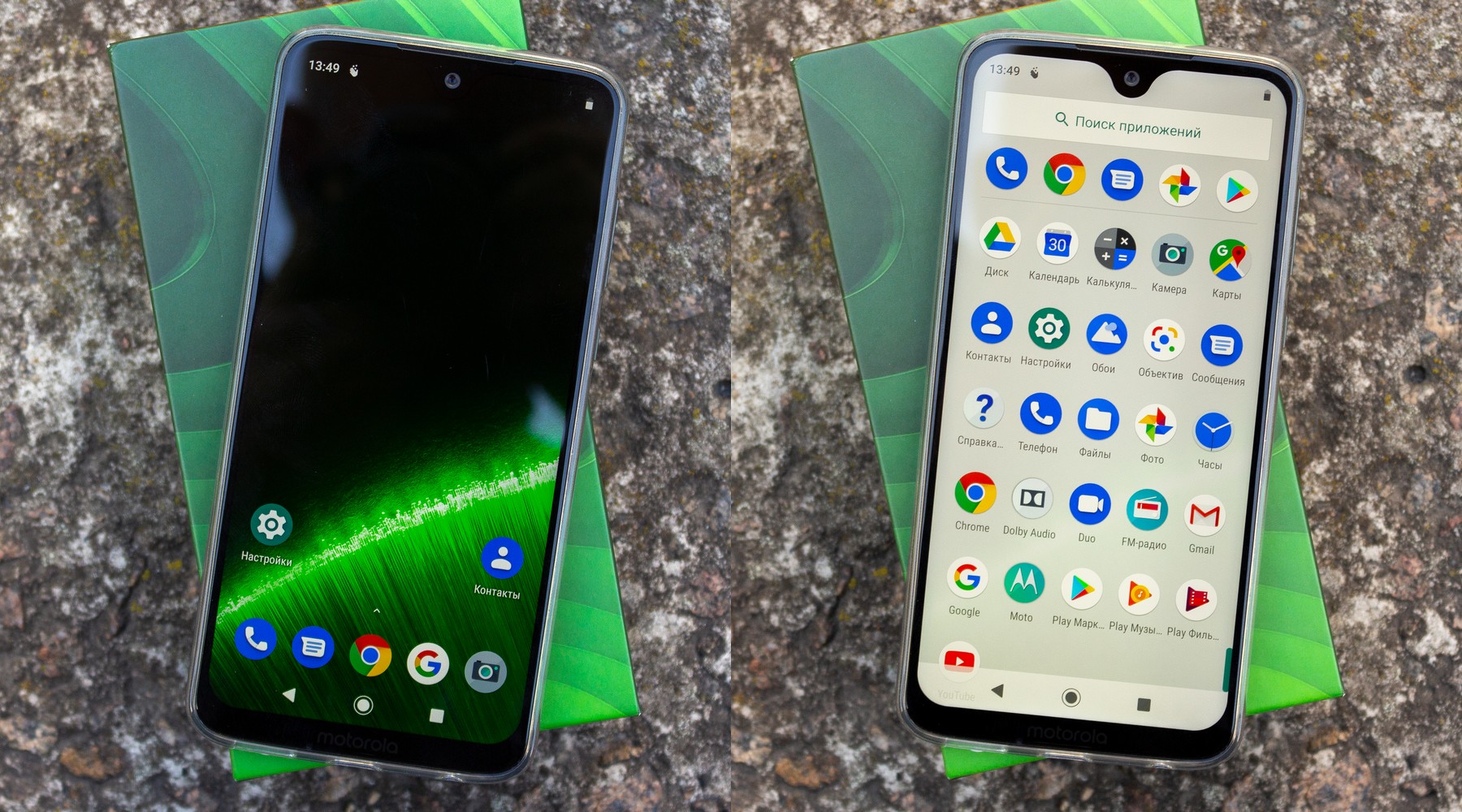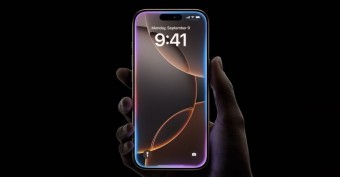Qualcomm Snapdragon processors: what are they, how are they different, which one to choose?
We independently test the products and technologies that we recommend.

Full handful
To date, there are more than a dozen current models of Qualcomm chips. Consider briefly the technical characteristics of each of them.
Low-cost models:
- Snapdragon 439 and 450 - eight ARM Cortex-A53 processor cores, integrated graphics accelerator Adreno 505/506, 12/14 nm manufacturing process, average result in GeekBench 3300 / 3800 points, AnTuTu 59000 / 61000 (competitors MediaTek Helio P22 and P35);
- Snapdragon 632 - eight cores Kryo 250 (Cortex-A53 modified by Qualcomm), Adreno 506 graphics, 14 nm manufacturing process, GeekBench 4500, AnTuTu 84000.
 |
Mid-level models:
- Snapdragon 636 and 660 - four high-performance Kryo 260 Gold cores (similar to Cortex A73) and four more energy-efficient Kryo 260 Silver (similar to Cortex A53), Adreno 509/512 graphics, 14 nm manufacturing process, GeekBench 5000 / 5500, AnTuTu 95000 / 110000 (competitors Helio P60 and P70, Exynos 7904);
- Snapdragon 665 - four Kryo 260 Gold and four Kryo 260 Silver cores, Adreno 610 graphics, 11 nm manufacturing process, GeekBench 5700, AnTuTu 115000 (competitors Kirin 710, Exynos 9610);
 |
- Snapdragon 670, 710 and 712 - two cores Kryo 360 Gold (Cortex A75) and six Kryo 360 Silver (similar to Cortex A55), Adreno 615/616 graphics, 10 nm manufacturing process, GeekBench 5700 / 5800 / 6000, AnTuTu 126000 / 137000 / 144000 ;
- Snapdragon 675 - two Kryo 460 Gold (Cortex A76) and six Kryo 460 Silver (Cortex A55) cores, Adreno 612 graphics, 11 nm manufacturing process, GeekBench 6400, AnTuTu 130000 (competitors Helio G90, Kirin 810);
- Snapdragon 730 - two Kryo 470 Gold (Cortex A76) and six Kryo 470 Silver (Cortex A55) cores, Adreno 618 graphics, 8 nm manufacturing process, GeekBench 6800, AnTuTu 165000.
 |
Flagship models:
- Snapdragon 845 – four Kryo 385 Gold cores (Qualcomm proprietary architecture) and four Kryo 385 Silver cores, Adreno 630 graphics, 10 nm manufacturing process, GeekBench 8800, AnTuTu 228000 (competitors Kirin 980, Exynos 9820);
- Snapdragon 855 - eight Kryo 485 cores (one ultra-powerful, three powerful and four energy efficient), Adreno 640 graphics, 7 nm manufacturing process, GeekBench 11000, AnTuTu 257000 (competitors Kirin 990, Exynos 9825).
And now let's take a closer look at the architectural features and functionality of a typical mid-range Snapdragon 636 processor using the Motorola Moto G7 Plus smartphone as an example.

The Motorola Moto G7 Plus is one of the most feature-packed Android smartphones under $300. Its IPS-screen occupies as much as 81 percent of the front panel and has a neat teardrop-shaped cutout for the front camera. With a screen diagonal of 6.2 inches, the resolution is 2270x1080 pixels, which results in a cinematic aspect ratio of 19:9 and a high image density of 405 PPI. Unpleasant PWM flicker (PWM), as in competing smartphones with AMOLED displays, fortunately, is not observed.
The screen of the Moto G7 Plus is covered with tempered glass Gorilla Glass 3, and the back of the smartphone is made of the same material. Behind, in addition to the fingerprint scanner stylized as the Motorola logo, there are two more cameras: the main one is 16 MP with f / 1.7 aperture and the additional one for measuring the depth of the frame is 5 MP f / 2.2. The main camera is built on a large Sony IMX519 photosensor (matrix size 1/2.6", pixel size 1.22 microns) with Dual Pixel phase detection autofocus and OIS optical stabilization.
It is OIS, which eliminates hand tremors when walking, that most distinguishes this smartphone from its “classmates” and makes it an excellent solution for video shooting, including 4K@30fps. But there is no ultra-wide-angle lens - this is already the prerogative of the model Motorola One Action 128 GB / 4 GB . The front-facing 12-megapixel camera takes very decent pictures, and all thanks to the also large photo sensor (1/2.9", 1.25 microns). For comparison, many competing smartphones use a similar-sized photo sensor as the main camera, while the front camera is much simpler.
The brain of the Moto G7 Plus is an octa-core Qualcomm Snapdragon 636 processor with integrated Adreno 509 graphics. It has 4 GB of RAM and 64 GB of permanent flash memory. You can expand the internal storage using a microSD memory card, and it has a separate slot that does not interfere with the installation of two SIMs. Pleasant bonuses are high-speed Internet via Wi-Fi 802.11ac and 4G-LTE, NFC contactless payments, vociferous stereo speakers, a two-way USB-Type C cable and a transparent silicone case included.
As a result, Motorola Moto G7 Plus is a moderately priced, but surprisingly balanced smartphone on a pure version of the Android OS with support for convenient Moto gestures (for example, turning on the camera or flashlight by shaking the smartphone). It is suitable for both demanding games and regular photo and video shooting. Do not forget about the solid 27-watt complete Turbo Charge power supply, which charges the smartphone by as much as 80 percent in just half an hour. Given this, Moto G7 Plus can be forgiven even by today's average battery capacity - 3000 mAh. Fans of more autonomy should take a closer look at the smartphone Motorola Moto G7 Power 64 GB / 4 GB with a 5000 mAh battery. However, in terms of other characteristics, it loses to Moto G7 Plus.
Detailed analysis of Snapdragon 636
Structurally, modern mobile chips are not just processors, but self-sufficient single-chip systems (from the English System-on-a-Chip or SoC for short), which, in addition to processor cores and a graphics accelerator, include many additional elements. But first things first.
So, the processor part of the Qualcomm Snapdragon 636 single-chip system is built according to the big.LITTLE scheme, that is, out of eight processor cores, four are high-performance Kryo 260 Gold with a frequency of 1.8 GHz, and four more are energy-efficient Kryo 260 Silver 1.6 GHz. The theoretical performance of the first is already 6.35, and the second is only 2.24 DMIPS / MHz (Dhrystone synthetic test of integer calculations).
 |
To manage simple background processes to minimize smartphone battery consumption, junior Silver cores are used, and when you need to solve a really complex task (for example, games with three-dimensional graphics), older Gold cores are already connected. In the old version of the popular Android processor benchmark Geekbench 4.4, this processor scores about 5000 points in multithreading, and in the new version 5.0 - 1200 points (the number and complexity of tests have increased).
The second most important component of the Snapdragon 636 is the graphics accelerator, or, simply, the Adreno 509 graphics card. It has 128 micro-cores at 720 MHz, which results in a theoretical performance of 184 GFLOPS (billion floating point operations per second). All current graphics software technologies are supported: Vulkan 1.0, OpenGL ES 3.1, OpenCL 2.0 and DirectX 12.
 |
Another interesting Adreno 509 technology, this time hardware-based, is Universal Bandwidth Compression (UBWC), which compresses game textures to speed up their transfer over a narrow memory bus. And this is clearly not superfluous, because even though the Snapdragon 636 has a dual-channel LPDDR4 2x32-bit RAM controller, the memory frequency is limited to a modest 1333 MHz by today's standards (21 GB / s bandwidth). As a result, in the combined AnTuTu benchmark (processor plus video card) it turned out to earn not a lot, not a little, 116,000 "parrots" (a playful name for synthetic benchmark scores, which do not always reflect reality). However, smartphones that score more than 100 thousand points in AnTuTu are considered gaming.
 |
Also important components of the Snapdragon 636 are the DSP Hexagon 680 and ISP Spectra 160 co-processors, even more power-efficient cores that specialize in specific tasks. So, Hexagon is responsible for smooth playback and fast editing of high-definition video. All the latest video codecs are supported, including H.264 (typical FullHD movie), H.265 (4K movie) and VP9 (online YouTube video). In turn, Spectra is responsible for the operation of the cameras: it speeds up autofocus, measures the depth of field of the frame, removes noise from photos and stabilizes video recording.
In addition to the above, Snapdragon 636 has other elements: Qualcomm Aqstic audio codec, USB 3.1 wired data transfer and Quick Charge 4.0 fast charging controllers, 4G-LTE wireless Internet modules with speeds up to 600 Mbps and Wi-Fi 802.11ac up to 433 Mbps /With.
 |
conclusions
So with which Qualcomm processor will you end up choosing an Android smartphone? Snapdragon 439 looks worthy among low-cost chips. Its cores are, of course, rather weak by today's standards, but the smartphone's battery is drained very slowly, not least thanks to the modern 12-nm process technology (even more thorough technological production standards in low-cost chips are not yet used ). In the middle class, the 11-nm Snapdragon 665, which replaced the 636 just discussed in this article, and the only recently announced 8-nm Snapdragon 730, look the most profitable, however, smartphones based on it have not yet gone on sale. Well, lovers of all the most powerful have no choice but to buy a smartphone with the flagship 7nm Snapdragon 855, or even better, its overclocked version 855+.
Articles, reviews, useful tips
All materials

































